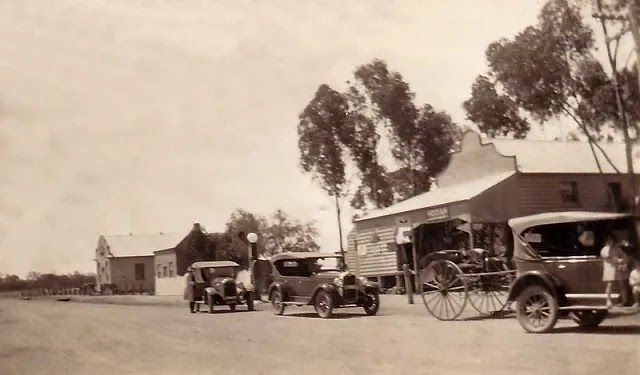
I think many of us have heard the story of the lost continent of Atlantis. The famous Greek philosopher Plato first described an island continent called Atlantis.
According to Plato’s description, Atlantis had its civilization and culture. But the island continent sank under the sea. It happened after losing the favor of the gods.
Most researchers and analysts consider Atlantis as a mere piece of fiction. But this lost continent has captured the imagination of people throughout the ages.

Some have even tried to locate Atlantis. They traced Atlantis from the region around Egypt to the North and South Poles. But Atlantis has always proved a mirage to the curious.
But in contrast to this fictional Atlantis, there is a real Atlantis. It is a Russian Atlantis whose story is very like the fictional one. This Atlantis, too, was once prosperous but was later buried.
Of course, the gods had no hand in this Atlantean cremation. But the world’s most destructive creature, humans, was responsible for it!
The Story of The Russian Atlantis
You will find this lost city in Yaroslavl Province, northwest of Moscow. It is the capital city of the present Russian Federation. Everyone called this Russian Atlantis Mologa.
It was an ancient city in Russia and was at the confluence of the Volga and Mologa rivers. This city has existed since the beginning of the 12th century. Its existence is available in the Russian chronicles of 1149.
At that time, Russia had many small states. In the early thirteenth century, the Russian Atlantis was part of the Rostov state.
Later, the Yaroslavl state occupied the magnificent city. In 1321, Mologa itself became an independent Russian state. But within a few days, the powerful Russian state, Muscovy, captured Mologa.
It was one of the most valuable commercial centers in Russia, without any doubt. It was the commercial center from the late 14th century to the early 16th century.
At that time, one of the largest trade fairs in Russia took place in this lost city. Many merchants from various countries in Europe and Asia participated in this fair.
The city had become one of the most important trade centers by the end of the fifteenth century. It was the center of trade between Russia and the Asian states.
The authority of that time built a fort for the defense of Mologar. Russian Atlantis became a commercial ‘Sloboda’ or duty-free trading center. It became during the socio-political upheaval in Russia in the 16th century.
In 1777, the Russian empress Catherine II transformed it into a district headquarters. During this time, this lost city saw economic development.
The Volga trade route and the growth of the then-capital of Russia led to this development. It became an important port on the Volga River.
Hundreds of ships used to pass through this city every year. These ships collected goods and other facilities from this place. This lost city was famous for its commercial activities.
It was rich in medieval and classical architecture. The 15th-century Saint Athanasius Convent was one of the buildings in the town.
The convent had four churches by the end of the 19th century. Epiphany Cathedral was an architecture of 1882.
It was a Russian Byzantine style architecture. It is also one of the attractions of the city. There was a stone-built fire station in the town with its adjacent watchtower.
It was also a source of pride for the townspeople. Its architect was Andrei Dostoevsky. He was the brother of the world-famous Russian writer Fyodor Dostoevsky. In 1881, Mother Superior Taisia, abbot of a monastery near this lost city.
She dreamed that she was walking through a paddy field. The paddy field was sinking in the water. She kept walking in the water, and the water rose to his neck.
At that time, someone gave her an object from the water. She tried to rise above the water by holding it. The water started to recede again, and the white stone walls of the monastery began rising from the water!
Mother Taisia recorded this strange dream in her diary. But she did not know their beloved city was going to submerge. It happened within the next half-century after her dream!
The Russian Revolution of 1917, led by Vladimir Lenin, took power in Russia. And in 1922, this revolution founded the Soviet Union on the ruins of the Russian Empire.
After Lenin died in 1924, Joseph Stalin became the ruler of the Soviet Union. Under the leadership of Stalin, industrialization began on a massive scale.
In the 1930s, the Soviet Union became one of the big industrial countries on the planet. And this lost city became a victim of this industrialization.
In 1935, the authority decided to build the large-scale Rybinsk hydroelectric station. They also decided to make the Rybinsk reservoir in Yaroslavl province. The location city of Rybinsk is near Mologar.
At the initial stage of this project, the authority decided there was no need to sink the city of Mologa. After the construction of the Rybinsk Reservoir, this place would become an island.

But during the construction of the Rybinsk Dam, another thing happened. The authority decided to raise the height of the reservoir.
They decided to raise the height to 102 meters instead of 98 meters above sea level. They aimed to increase the production capacity of the hydroelectric power station.
It resulted in the size of the reservoir is much larger. Much larger than planned, and the need to submerge the city of Mologa. Rybinsk Reservoir was the largest artificial reservoir at that time.
The Soviet authorities, thus, ordered the evacuation of about 130,000 people. They were the dwellers of this city and its surrounding villages.
The authority dismantled and transported the houses made of wood by ship. And the Soviet government compensated stone houses.
These development refugees from Mologar resettled elsewhere in Yaroslavl province. They also took shelter in neighboring regions. It includes Moscow and Leningrad.
The soviet government completed the evacuation of the city in 1941. Then they blew up all buildings, factories, churches, and other architecture. It was then submerged.
Some of the residents of Mologar refused to obey orders to leave the city. It is a secret report by the Soviet intelligence agency NKVD.
The town’s 294 residents decided to stay in their homes. They shackled themselves to various heavy objects. But people do not know about what happened to them.
But, many believe that the government buried these unfortunate inhabitants in the city. There is a monument to remember these inhabitants of Mologar.
This city is completely submerged. But the height of the Rybinsk Reservoir sometimes drops. And ruins of the Mologa become visible.
In 1992, the height of the Rybinsk reservoir dropped by one and a half meters. As a result, historians sent an expedition team to theirs.
Authority constructed a museum from the material collected by this expedition team. They also made a documentary based on the collected material.
In 2014, Mologa became visible again as the height of the reservoir dropped again. The city is almost a ruin today. It remained underwater for so long.
And it became the victim of destruction that the Soviets did not destroy. Besides, former residents and their descendants still flock from all over Russia. They come here every year to visit the city.
Many of them believe that, like the first part of Mother Taisia’s dream, the last part will come true. The last part is the city of Mologa will one day become habitable again!
Every year on the 14th of April in Yaroslavl Province, people celebrate Mologa Day. They celebrate this day to commemorate the burial of Mologa.
The Salilsamadhi of Mologar is an example of a humanitarian catastrophe. Stalinist industrialization caused this catastrophe. But many believe that this tragedy saved Russia from an even greater one.
The Rybinsk Reservoir took formation because of submerging Mologa. It supplied power to Moscow during critical times during World War II.
Known as the Rybinsk Sea, this place has become a center for fisheries, recreation, and tourism. The Rybinsk Sea is an attractive destination.
It is for those in the immediate vicinity who cannot afford to travel to the Black Sea. Moreover, the Russian Atlantis also attracts many curious tourists like a magnet.
Conclusion
It is the detailed story of the Russian Atlantis. It is not a fictional story but a real story. Many people of Russia visit this place to remember the lost people there.
This sunken town revives memories of Stalinist-era Russia. Many residents of this place want to keep track of their past. The memory of uprooting still haunts many people after the event.
This place is symbolic of the complex relationship Russians have with their history. It is still a field of attraction for many historians and researchers around the planet.
They want to discover more about it and represent it to the people. More research is necessary to know about this Russian Atlantis.
- 10 Interesting Facts About Bali: An Island of Indonesia
- A Complete List of Union Parishads in Bangladesh
- Lac de Gafsa: A Mysterious Lake in Tunisian Desert

A Bangladeshi entrepreneur. A person who loves nature, a web developer, and the founder of Srigal and Nehrin.